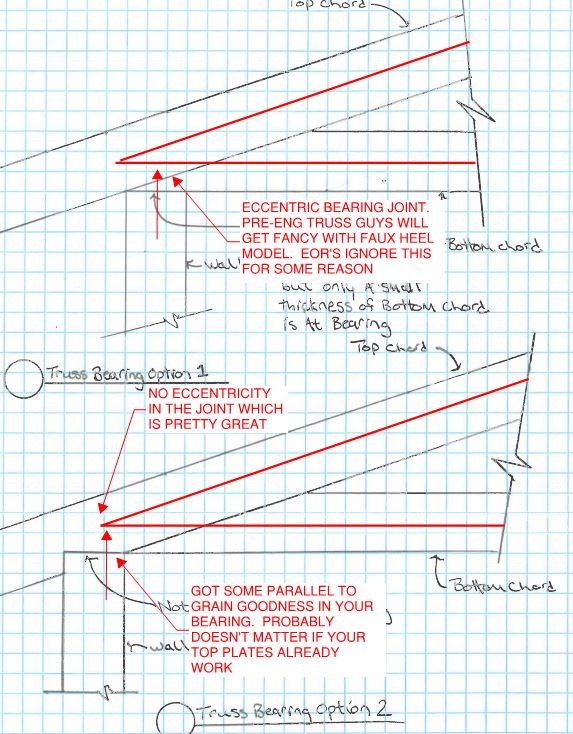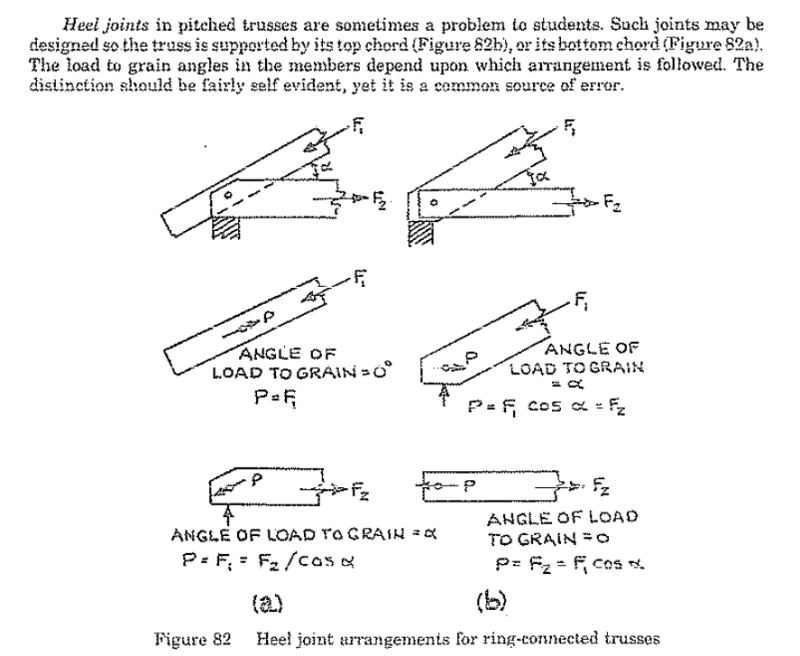Gopher13
Structural
- Jun 21, 2016
- 94
I am designing a truss composed of 4 x 8 wood members (or something like that). The attached sketch shows two different bearing options. The first one has the bottom chord bearing on the wall right where the top chord runs by leaving only a small sliver left. The second one has the top chord notched and bearing on the wall. I do not like the notch. I also do not like the small sliver left at bearing, but I don't really know why. There is not really any shear in the bottom chord so the reduced section height shouldn't matter. Which option do you like? Or maybe you have a better idea?


